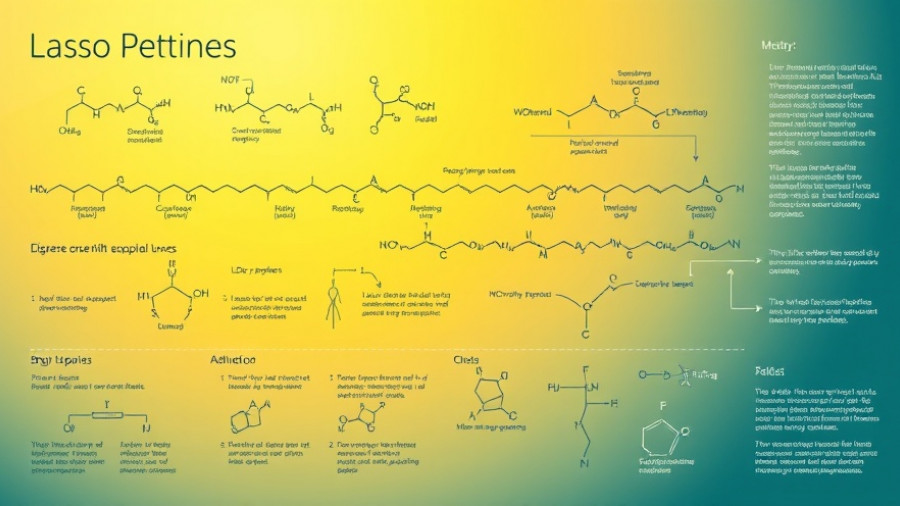
Unlocking the Secrets of Lasso Peptides
In recent years, scientists have been making remarkable advancements in peptide engineering, a field that holds great promise for developing innovative therapies for chronic diseases. A significant breakthrough comes from researchers at the Carl R. Woese Institute for Genomic Biology, who have created a sophisticated large language model named LassoESM, designed to decode the unique properties of lasso peptides. What are lasso peptides, and why are they essential in therapeutic developments?
Lasso peptides are fascinating compounds produced by bacteria. They possess a unique knot-like structure that grants them high stability and the ability to combat challenging health conditions, such as bacterial, viral, and even cancerous infections. The lasso structure is formed through a complex biosynthetic process involving ribosomes and specialized enzymes. As researchers like Doug Mitchell highlight, these peptides are ripe with potential for drug discovery.
The Power of Machine Learning in Peptide Engineering
The introduction of the LassoESM model revolutionizes how we understand lasso peptides. Traditional AI models for protein prediction, like AlphaFold, struggle to accurately predict the complex topology of lasso peptides. By focusing specifically on lasso peptides, LassoESM captures their nuances, allowing researchers to create predictive models for their properties. This tailored approach is crucial for unlocking the therapeutic potential of these compounds.
Understanding Lasso Peptides: Their Nature and Function
The remarkable knot formation of lasso peptides is the key to their strength and resilience. Each peptide requires specific lasso cyclases, which act like locks requiring unique keys to bind with lasso peptides. The ability of scientists to predict these interactions through models like LassoESM simplifies the complex lasso peptide engineering process, presenting new opportunities in drug design.
Dr. Diwakar Shukla, a researcher involved in LassoESM's development, notes that accurately predicting which lasso cyclases can form a lasso peptide from just an amino acid sequence is a game-changer. This efficiency opens doors to engineering peptides for specific biomedical applications, ultimately helping to create better-targeted medications.
A Look Ahead: The Future Possibilities
Looking forward, research teams like Mitchell's and Shukla's plan to expand LassoESM's capabilities further. These enhancements will enable new predictive models for other peptide natural products, paving the way for innovative drug designs that may significantly improve patient outcomes. Combining advanced computational methods with experimental validation is paving the route for exciting developments in the field of peptide therapeutics.
Conclusion: The Promise of Peptide Engineering
The work done by researchers on lasso peptides and their language model signifies a major advancement in both biotechnology and biomedical engineering. By bridging the gap between proteins and machine learning technologies, scientists are getting closer to developing efficient and effective therapeutic options for various diseases. The journey to harnessing lasso peptides denotes not only a leap in scientific innovation but also a hopeful prospect for future treatments.
 Add Row
Add Row  Add
Add 




Write A Comment